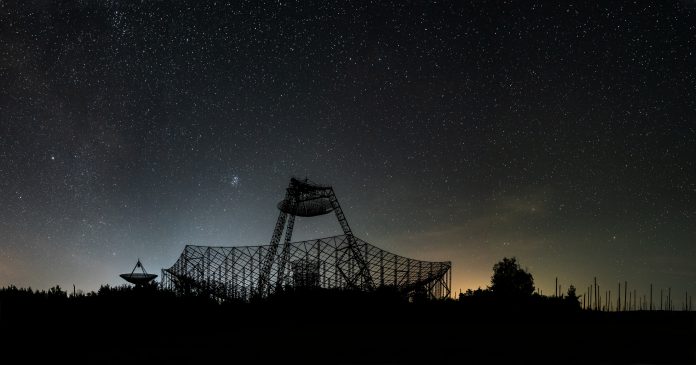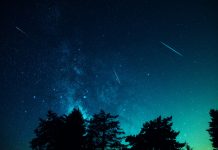Here, J.D. Huba, Vice President at Syntek Technologies, shares their expert insight into simulating ionosphere bubbles and plasmasphere ducts
Large scale electron density irregularities often form in the post-sunset, equatorial ionosphere. They are commonly referred to as ‘equatorial plasma bubbles’ – low-density plasma plumes that rise from 300km to over 1000km. These bubbles occur because the ionosphere becomes unstable at times to a Rayleigh-Taylor-like instability. Modelling and forecasting the development of these bubbles has become very important because of their impact on space weather: they cause radio wave refraction and scintillation that degrade communication and navigation systems.
Recently there has been a breakthrough in modelling plasma bubbles in the equatorial ionosphere [Huba and Liu, 2020]. The first-principles whole atmosphere model WACCM-X [Liu et al., 2018] has been coupled to the global ionosphere/plasmasphere model SAMI3 [Huba and Joyce, 2010]. In this modelling study, WACCM-X provided the large-scale variations of the neutral densities, temperature, and winds as inputs to SAMI3, and includes atmospheric gravity waves that act as seeds to trigger the instability. A critical feature of this simulation was that a high-resolution grid (<~70km) was used which allowed the model to capture ESF bubble onset and evolution on a global scale. Moreover, the modelling results agreed remarkably well with emission observations from the NASA GOLD satellite [Eastes et al., 2019].
Plasmasphere ducts
Subsequent analysis of the SAMI3/ WACCM-X results revealed another interesting aspect of the simulation: the development of plasmasphere ducts and irregularities. The plasmasphere is a region of low-density, cold plasma on closed magnetic field lines extending several earth radii in space. Although often assumed and modelled to be relatively smooth, recent studies using radio telescope technology have discovered that ducts and irregularities can form in the plasmasphere [Loi et al., 2015; Helmboldt et al., 2020].
In Fig. 1 we show isosurfaces of the electron density (103 cm-3 and 104 cm-3) from a high-resolution SAMI3 simulation using the empirical models NRLMSISE00 [Picone et al., 2002] and HWM14 [Drob et al., 2015] (left) and the first-principles model WACCM-X (right) to specify the thermosphere neutral composition, temperature, and winds. The isosurfaces using the empirical models are very smooth as anticipated. However, the isosurfaces using WACCM-X inputs are structured showing corrugations and ducts (tube- like electron density features aligned with the geomagnetic field). These irregularities are caused by atmospheric gravity waves modelled by WACCM-X. The gravity waves cause perturbations in the neutral wind that subsequently impact the dynamics of both the ionosphere and the plasmasphere through electrodynamic coupling. This is the first self-consistent plasmasphere/thermosphere simulation study showing this dynamic plasmasphere behaviour.

It is known that plasmasphere ducts and irregularities affect whistler wave propagation in the plasmasphere and radiation belts [Helliwell, 1965]. The importance of this issue is that whistler waves can interact with radiation belt particles and strongly affect the population of the radiation belts. Specifically, whistler waves can scatter high energy electrons into the lower atmosphere where they are absorbed. Aside from implications for the morphology of the naturally occurring Van Allen radiation belts, this plasma-wave interaction process is germane to the dynamics of man-made radiation belts [Gombosi et al., 2017].
Thus, this new modelling capability with SAMI3/WACCM-X is expected to shed light, not only on the dynamics of equatorial plasma bubbles but also on the development and evolution of plasmasphere ducts and irregularities. Moreover, this research directly relates to the NASA Global-scale Observations of the Limb and Disk (GOLD) mission and The Ionosphere Connection Explorer (ICON) mission which are designed to study atmosphere/ionosphere interactions.
References
Booker, H.G. and H.G. Wells, Scattering of radio waves by the F-region of the ionosphere, Terr. Mag. Atmos. Elec. 43, 249, 1938.
Drob et al., An update to the Horizontal Wind Model (HWM): The quiet time thermosphere, Earth and Space Science, doi:10.1002/2014EA000089, 2015.
Eastes, R.W., S.C. Solomon, R.E. Daniell, D.N. Anderson, A.G. Burns, S.L. England, et al., Globalscale observations of the equatorial ionization anomaly, Geophysical Research Letters, 46, 9318, https://doi.org/10.1029/2019GL084199, 2019.
Gombosi, T.I., D.N. Baker, A. Balogh, P.J. Erickson, J.D. Huba, and L.J. Lanzerotti, Anthropogenic space weather, Space Sci Rev, 212, 985, DOI 10.1007/s11214-017-0357-5, 2017.
Helliwell, R.A., Whistlers and related ionosphere phenomena, Stanford: Standford University Press, 1965.
Helmboldt, J.F., J.D. Haiducek, and T.E. Clarke, The properties and origins of corotating plasmaspheric irregularities as revealed through a new tomographic technique, J. Geophys. Res.: Space Phys., 125, e2019JA027483, https://doi.org/10.1029/2019JA027483, 2020.
Huba, J.D. and G. Joyce, Global modeling of equatorial plasma bubbles, Geophys. Res. Lett. 37, L17104, doi:10.1029/2010 GL044281, 2010.
Huba, J.D. and H.-L. Liu, Global modeling of equatorial spread F with SAMI3/WACCM-X, Geophys. Res. Lett., 47, e2020GL088258. https://doi.org/10.1029/2020GL088258, 2020.
Liu, H.L., Bardeen, C. G., Foster, B. T., Lauritzen, P., Liu, J., Lu, G., Wang, W., Development and validation of the Whole Atmosphere Community Climate Model with thermosphere and ionosphere extension (WACCMX 2.0), Journal of Advances in Modeling Earth Systems, 10, 381, https://doi.org/10.1002/2017MS001233, 2018.
Loi, S.T. et al., Real-time imaging of density ducts between the plasmasphere and ionosphere, Geophys. Res. Lett., 42, 3707, doi:10.1002/2015GL063699, 2015.
Picone, J.M., A.E. Hedin, D.P. Drob, and A.C. Aikin, NRLMSISE-00 empirical model of the atmosphere: Statistical comparisons and scientific issues, J. Geophys. Res. 107, doi: 10.1029/2002JA009430, 2002.
Dr. H.-L. Liu was a key collaborator on this research project.
This research has been funded, in part, by the National Science Foundation (AGS1931415).
*Please note: This is a commercial profile
© 2019. This work is licensed under a CC BY 4.0 license.











